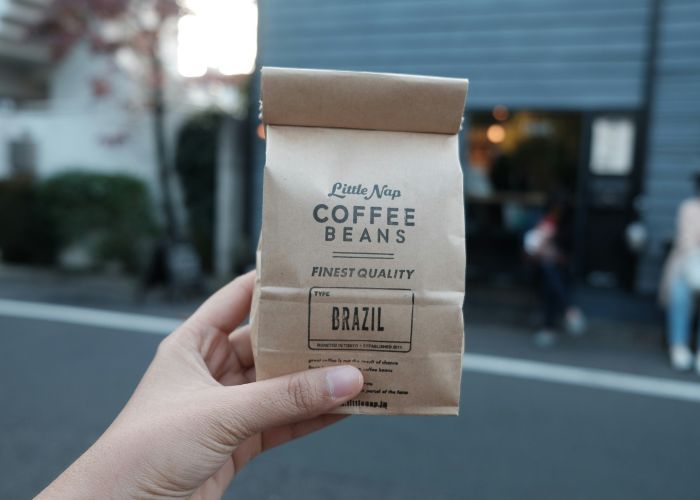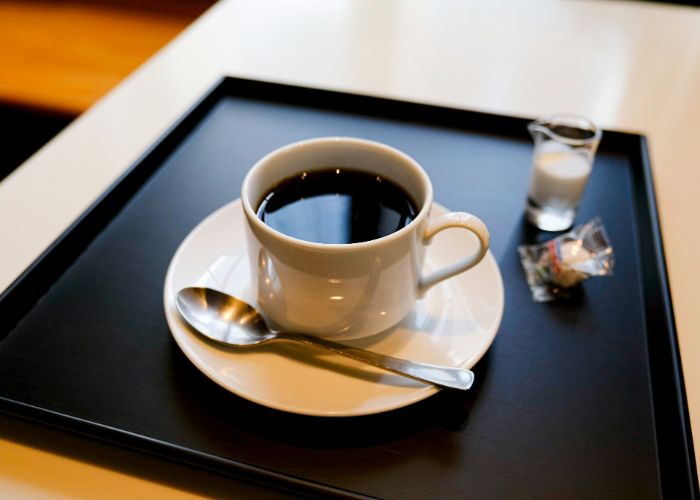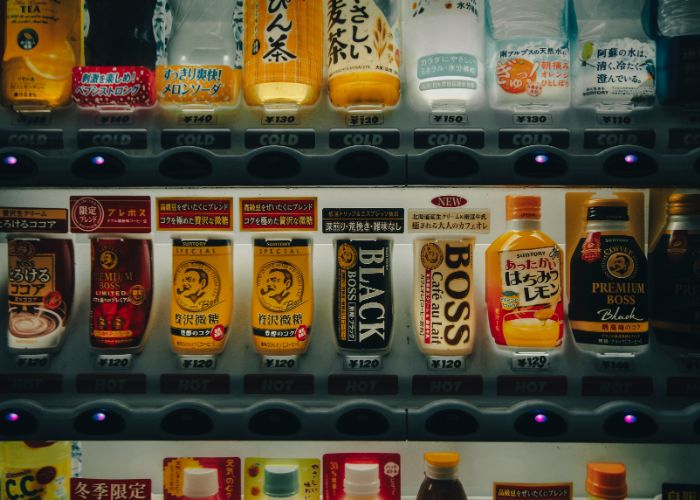Japan may be considered the land of matcha, but lucky for coffee connoisseurs, cafes and coffee are abundant. Coffee is widely consumed in Japan thanks to coffee first imported from Brazil, kissaten, and the desire for convenient caffeinated options. In fact, the country ranked third in worldwide coffee consumption. The coffee scene is booming and shows no signs of slowing down!
Keep reading to learn everything you need to know about Japanese coffee culture.
History of coffee in Japan

While Japan's matcha and tea varieties are globally recognized, it may be possible that kohi (coffee) within the country is more popular day-to-day due to its ready-to-drink options from vending machines and convenience stores. But to understand the history of coffee in Japan, we need to look at Brazil's influence.
Take the time to look around, and you will quickly notice a lot of Brazilian imports in Japan's coffee shops: coffee beans, Bossa Nova, and even the use of Portuguese words in cafe names. In 1908, Japanese immigrants arrived in Brazil to work on coffee plantations with the help of Mizuno Ryo, the man responsible for bringing the first immigrants to São Paulo. For its gratitude, the Brazilian Government gifted Mizuno coffee to return to Japan, thus sparking the idea to open Japan's first coffee shop and one of the World's first coffee chains, Café Paulista. Opening in Ginza in 1911, this cafe is still in business today.
Since then, Japanese coffee shops have become increasingly popular and developed an innovative coffee culture that is officially celebrated by coffee connoisseurs worldwide.
Traditional Japanese coffee culture

We can't talk about cafes in Japan without mentioning kissaten. This Japanese-style coffee shop rose to popularity due in part to Café Paulista. Kissaten became the go-to for coffee lovers during the Showa Era (1926–1989), a time when Japan's economy was on the rise and the country was particularly open to Western trends and ideas.
While cafes nowadays replicate those popularized during the third wave of coffee culture, kissaten still holds onto the look and feel of Japan in the '60s. There's a fine line between a kissaten and a cafe, but if you ever stepped into one, you will know exactly what we mean: retro dark interiors, booth seating, and wooden countertops.
Kissaten menus consist of a set meals, while cafes attract new customers with trendy dishes. You can enjoy kissaten food like tonkatsu (pork cutlet) sandwiches, croquettes, and an array of sweets such as coffee jelly, pudding, cream sodas, and pancakes. A famous breakfast option from the Nagoya kissaten scene, the "morning service," is typically a dark roast coffee served with toast and a boiled egg. Later, the Nagoya kissaten chain, Komeda's Coffee, popularized morning service and the famous sweet ogura toast: toast with butter and sweet red bean spread.
Coffee trends in Japan
Now, Japan's coffee culture is a delightful mix of trendy, retro, and convenient. And, as always, on the edge of innovation.

Traveling in Japan, you will quickly notice accessible vending machines and konbini (convenience stores). While less popular outside of Japan, canned coffee dominates the market. For about ¥120 (less than $1), you can snag a tasty canned cafe au lait or black coffee when you're in a rush or need a drink on the go.
Konbini chains such as 7-Eleven, Family Mart, and Lawson offer a wide variety of ready-to-drink bottled coffee from brand names such as Boss Coffee. With the rise of daily coffee consumption, these chains sought to capitalize on the trend and created their own "cafes." Automated coffee machines inside Seven Cafe (7-Eleven), Famima Cafe (Family Mart), and Machi Cafe (Lawson) offer affordable options like black coffee, iced coffee, lattes, frozen drinks, and the option to customize to your tastes with free cream and gum syrup cups.
Of course, the coffee options don't stop there.
When third-wave coffee became a global phenomenon, Japan also hopped on the train of specialty coffee. From tourist hotspots to residential areas, Japan's cafe culture has been experiencing a boom.
Trendy cafes focusing on high-quality drinks, food, and pastries are fast-growing among locals and visitors who love cafe hopping.
Even Japan's kawaii culture spills over into coffee. In the heart of Tokyo, you'll be spoilt for cute cafe options, like these cat cafes, anime and game collab cafes, and shops specializing in 3D latte art like Cafe Reissue. If konbini coffee wasn't enough, you can experience ultra-convenient cafes like this coin laundry with a fully functioning cafe inside.
Coffee omakase is the hottest trend at the coffee counter. Translating to "I'll leave it up to you," coffee omakase is similar to sushi omakase, in which the barista has the freedom to craft unique concoctions fitting the season.
Popular coffee chains
If you want to drink coffee like the locals, head to one of the many chain coffee shops. Both foreign and homegrown chains are great places to grab a quick bite, an affordable latte, and rest between tours.
Starbucks Japan dominates the chain market with over 1,700 stores, including the famous Reserve Roastery by the Meguro River. Not far behind are cost-effective Japanese coffee chains like Doutor, Excelsior Caffé, Caffé Veloce, Pronto, and Beck's, many of which can be found inside train stations.
Japan also has a range of kissaten-style chain coffee shops, such as Ginza Renoir, Komeda's Coffee, and Hoshino Coffee. Just be aware that smoking still exists in Japan and that some chains have designated smoking rooms.
Coffee shops to visit
There are thousands of coffee shops in Tokyo that will satisfy any coffee craving. If you need cafe recommendations for your Tokyo trip, here are a few we love:
- Best staff and vibe: Mermaid Coffee Roasters
- Best neighborhood: Sidewalk Coffee Roasters in Shimokitazawa
- Most unique: Anakuma Cafe
- Best latte art: Cafe Reissue
- Best third-wave Japanese chain: % Arabica
- Best coffee omakase: Cokuun
From canned coffee to high-end coffee omakase, no matter your coffee preference, there is always a cafe nearby. The best way to find your favorite is to try as many as you can during your Japan trip.
Want more coffee recommendations? Check out our list of Tokyo cafes and roasteries with killer coffee.
FAQ about coffee culture in Japan
What kind of coffee can I find in Japan?
The real question is, what kind of coffee can you not find? Japan has everything from canned coffee in vending machines to classic drip coffee, specialty beans, and creations that put it at the forefront of coffee innovation.
What's the difference between a cafe and a kissaten?
A kissaten is generally independently owned and reflects a retro aesthetic with set meals. Cafes are more mainstream and focus on craft coffee.
Can I buy matcha (Japanese green tea) in coffee shops?
Not all shops will have matcha. Some chains sell matcha and tea, but matcha and tea are generally reserved for tea houses.
How can I order coffee at a cafe?
Try out these useful phrases when ordering coffee in Japan. Just be aware some chains like Starbucks and a few independent shops can customize your order, but it's not the standard. You may have a tough time getting alternative milk or decaf.
Do cafes in Japan have Wi-Fi?
Generally, coffee chains have Wi-Fi, but outlets may be difficult to find. At independent shops, it's always good to ask about Wi-Fi if you need it, but don't expect the local kissaten to have connection.
Where can I find the best coffee in Japan?
Now, that depends on your personal preferences and location, but you are in for a treat no matter what kind of coffee or cafe style you like.